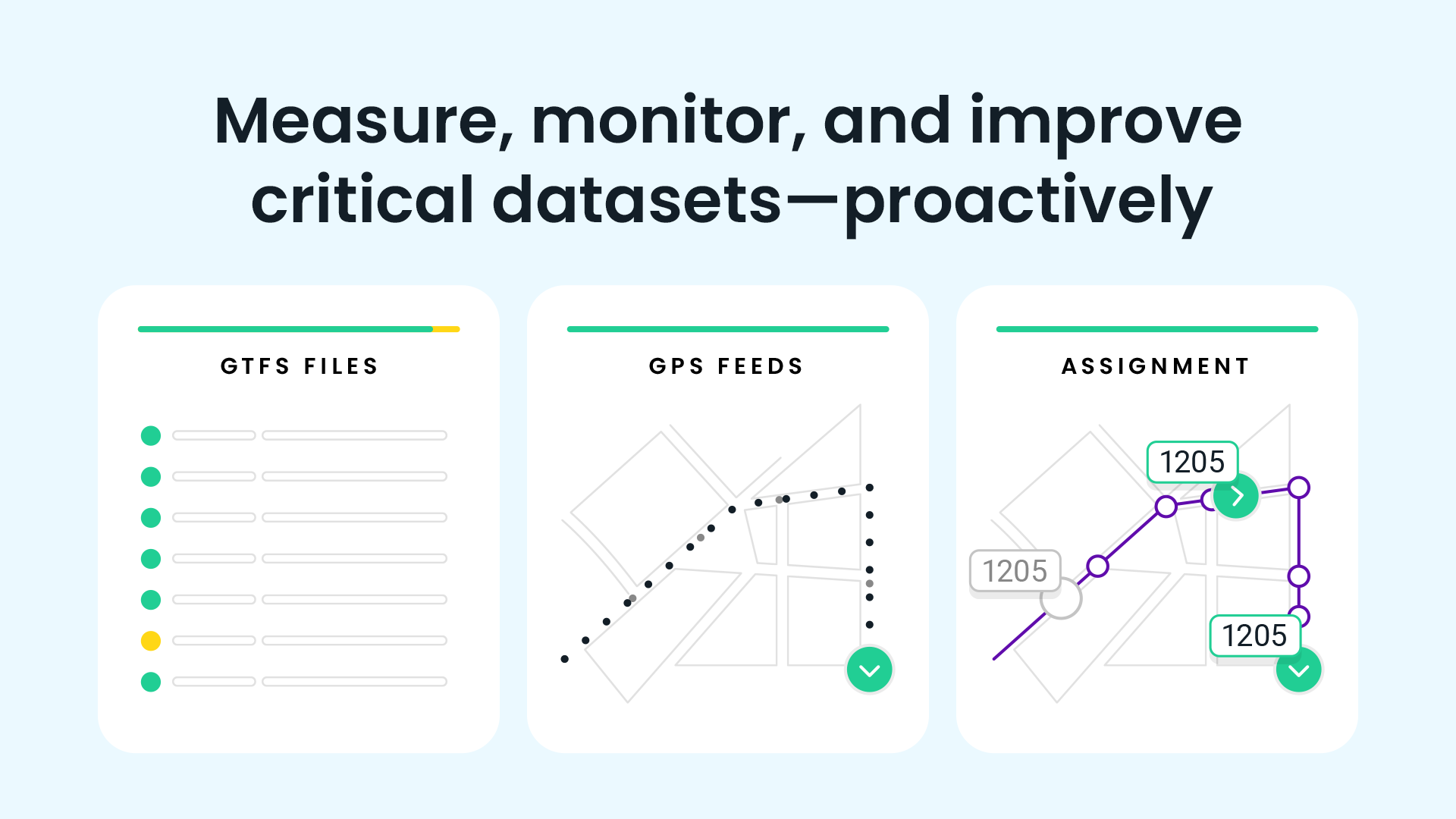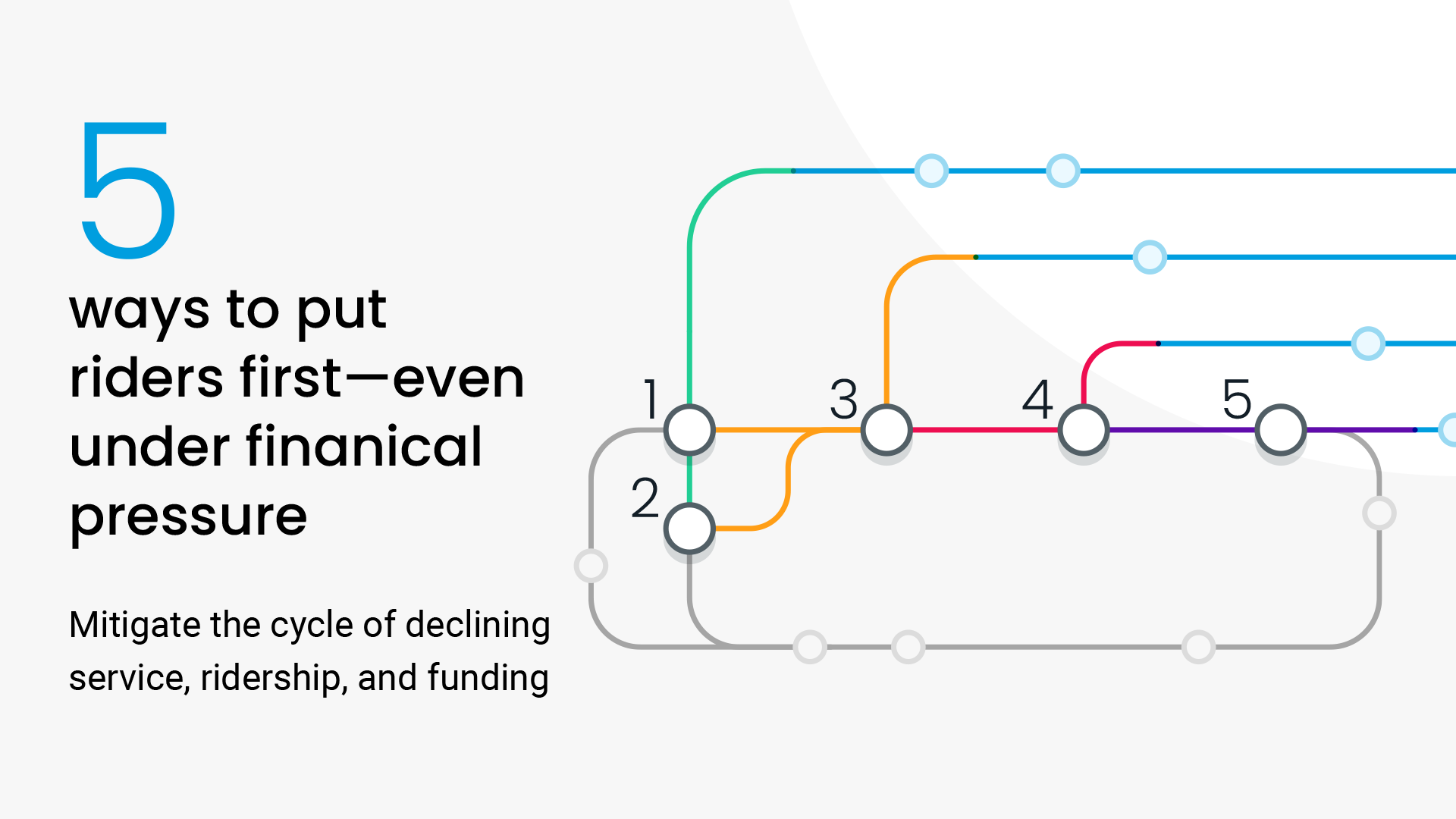
January 19, 2022
Oulu Public Transport Authority Eliminated the Need for Two Buses with Swiftly

January 19, 2022
Oulu Public Transport Authority Eliminated the Need for Two Buses with Swiftly
January 19, 2022
Oulu Public Transport Authority Eliminated the Need for Two Buses with Swiftly
Executive Summary
The planning team at Oulu Public Transport Authority (PTA) was using anecdotal evidence to adjust run-times and put together timetables, which was time consuming and led to inefficient schedules. The team started using Swiftly to analyse where to make changes on a granular level, which led to shorter run-times, better relationships with operators, cost savings, and significant improvements in on time performance. Now the Oulu Public Transport Authority can take a data-driven approach to planning and easily adjust timetables in less time than before.
At a glance
- OTP improved by an average of 10-20% on routes adjusted using Swiftly, with some routes achieving OTP improvements over 20%
- Run-times have been reduced by up to 15 minutes on routes modified using Swiftly
- Run-times savings eliminated the need for two buses, freeing up resources that can be redistributed elsewhere
- Planners can adjust routes 63% faster with Swiftly
- Relationships with operators have improved as a result of more accurate, efficient schedules
- Optimised schedules reduced the need for vehicles during normal circulation. For example route 5 can have the same level of service with fewer cars than before.
- Expanded route 5 to service 3 hours longer without increasing any costs
Plenty of data, but no way to fully utilise it
Oulu Public Transport Authority (PTA) needed a proactive approach to data. When the planning team adjusted run-times and put together new timetables, they relied primarily on anecdotal information, which made the planning process challenging and imprecise. “The process for creating and adjusting timetables was difficult before Swiftly. It was quite time consuming and we had to start it very early,” says Helena Väliaho, Head of Public Transportation at PTA.
“Contractor and customer feedback played a significant role in our planning process. It made us reactive instead of proactive, and some problems in our run-times would stay hidden,” explains Tomi Paananen, Public Transportation Planner at PTA.
Because the process for updating timetables was so arduous, the planning team was only able to implement changes a couple of times a year. If something wasn’t working with a timetable, operators and passengers would have to wait months until the problem was fixed.
The team knew it was time for a change. “There were no processes in place that let us figure out problems before anyone else noticed them. I wasn’t happy with that. I wanted to be able to analyse a problem instead of just hearing about it,” says Paananen.
The planning team started using Swiftly’s data and analytics to get a granular understanding of where to make changes, which let them change their approach. “We have always had plenty of data, but because we didn’t have any analytical tools as advanced as Swiftly we weren’t able to fully utilise our data,” says Paananen.
Using Swiftly to redesign the planning process
Using Swiftly has transformed how the team build new timetables. “Since getting Swiftly we have completely restructured our timetable planning structure,” says Paananen. “Before, we adjusted our timetables a few times a year. Now we adjust our timetables every month. Despite this, the time we use for timetable planning has not increased. Before even a simple line would take multiple hours to analyse. Difficult cases would take us a whole day. Now it takes us anywhere from 15 minutes to three hours.”
“I use the On-Time Performance and Run-Times modules on a daily basis. I’ve been able to redesign our planning process,” he continues. “We do not have to rely as much on outside support and are able to do a lot of planning within our own team. We don’t just go through customer feedback to find areas to improve. We go through Swiftly and use data to look at the lines that have worked and the lines that haven’t.”
“Prior to Swiftly, we couldn’t look at problems within routes. We always took routes as a whole and looked at overall run-time instead of the segments inside of a route. We couldn’t look at which part was working and which part wasn’t. We could only figure out a route’s whole run-time and that’s why we only did changes a couple of times a year. Now if we notice a problem we can point it out. We can say, ‘Only this little piece of a route isn’t working,’ and incorporate the change into our plans the following month,” says Paananen.
Paananen and Väliaho gave an example of how they use Swiftly to make changes. “We recently updated Line 20,” says Väliaho. “The operator was saying we needed to add one minute to the total run time for the route. Tomi and the team looked at it in Swiftly and actually ended up taking one minute away.”
“The problem on that line was that it wasn’t spaced out right. We needed to take some time out of one part of the route and put it elsewhere.” says Paananen. “I’d rather look at the time that the buses pass each stop instead of the whole run-time. The run-time will figure itself out as long as the on time performance is good.”
“If we’d done it the way we’d done it before, we would have automatically added that one minute to the route, and eventually it might mean adding an additional bus. Those little minutes are cost savings for us. That’s extremely important,” says Väliaho.
“After we implemented that change on Line 20, on-time performance increased by 15% immediately. That’s been pretty common with changes we make with Swiftly,” says Väliaho.
On time performance gains, cost savings, and eliminating the need for a bus
PTA is seeing big results for routes that have been adjusted using Swiftly. “In total we have adjusted a little under 20 routes with Swiftly. On those routes, on-time performance has consistently improved over 10% and, in best cases, well over 20%. The biggest improvement was on route 52, which is one of our longest routes. Its on-time performance wasn’t good at all. On more urban routes, the on-time performance generally improved over 10%, which is a significant improvement for those routes,” says Paananen.
“All of the routes we adjusted work really well right now. It looks like we don’t have to touch them at all anymore. Before, we’d change routes every single year, and now with Swiftly we are able to find a really good solution really quickly. We can leave the new routes as they are for a long time,” says Paananen.
PTA has also used Swiftly to discover that they can cut two buses without impacting service, which will lead to significant cost savings when they tender a new contract with operators. “One of the biggest ways that Swiftly has helped us with cost savings is by showing us that there is usually way too much overall run-time on a route. Minutes are often in the wrong places. With Swiftly, we can update how we run our buses. A trip that used to take one hour now takes 50 minutes, meaning that we use fewer cars to provide the same level of service. We’ve downsized cars from 12 to 10, and we save kilometres and work hours too,” says Paananen. “We can redistribute those resources elsewhere to provide better service overall.”
“Due to our ability to optimise our schedules, our need for extra shifts on top of our established timetables has been reduced. These extra shifts are extremely costly and we have been able to eliminate those costs completely. Due to shorter run-times we have been able to optimise routes to fit each other better and extra shifts are no longer needed,” says Paananen.
“Time savings have varied depending on the route, but sometimes even two minutes is a game changer,” says Paananen.
A data tool the whole agency can trust
“Now that we have this new process, I feel like the trust in our planning has improved. Operators can be confident that whatever we do is going to work very well most of the time. That’s a really big thing and I know a lot of our contractors were surprised at how much things improved after the modifications we made. They’ve been happy with the results,” says Paananen. “Previously I felt like contractors had to be really careful with their driving and adjust the timing themselves during the routes. Now they can just drive as they go. They know that we can step in and change things after a few weeks if something is off, as opposed to waiting half a year until this gets adjusted. They’re thinking to themselves, ‘We don’t have to navigate problems on this route for six months. We can just focus on driving.’ That increased operator trust has been one of the best things about working with Swiftly.”
“Whenever I have to make a case for a tool, it’s always about money. I get asked about how much savings we’d get from using it and explain why it would be an efficient tool for us. Swiftly will make it easier to make that case, because I can easily show how it’s helped us. And there are other teams here who are interested in using Swiftly as well, which would make it even more indispensable,” says Väliaho.
“Swiftly has greatly improved the passenger experience: We are able to detect problems before customers realise them. Our customer service contacts regarding run-times have significantly dropped,” says Paananen. “Customer service also uses GPS Playback and Live Operations to help passengers.”
“Swiftly is an excellent tool to make public transport more efficient and to find cost savings. It helps you find the problems which you are not able to see, which goes beyond run-times. it tenders everywhere. In our customer service, and everywhere else. The effects ripple outward,” says Väliaho.
“If you’re an authority interested in an actual data-driven approach, Swiftly is the best for that. If I have to justify my decisions, it’s a lot easier with Swiftly. I can confidently say what I need to say and back it up with data, instead of just sell a pitch. That’s a really big thing,” says Paananen.
He adds, “Swiftly is a game changer as it gives the Public Authority the perfect tools to be a proactive planner and it can change the whole structure of the planning process.”
Request a demo
The rich text element allows you to create and format headings, paragraphs, blockquotes, images, and video all in one place instead of having to add and format them individually. Just double-click and easily create content.
Last Name, Agency

What’s a Rich Text element?
What’s a Rich Text element?
What’s a Rich Text element?
What’s a Rich Text element?
What’s a Rich Text element?
The rich text element allows you to create and format headings, paragraphs, blockquotes, images, and video all in one place instead of having to add and format them individually. Just double-click and easily create content.
Last Name, Agency
Static and dynamic content editing
A rich text element can be used with static or dynamic content. For static content, just drop it into any page and begin editing. For dynamic content, add a rich text field to any collection and then connect a rich text element to that field in the settings panel. Voila!
How to customize formatting for each rich text
Headings, paragraphs, blockquotes, figures, images, and figure captions can all be styled after a class is added to the rich text element using the "When inside of" nested selector system.
- text goes here
- text goes here
- text goes here
- text goes here
- text goes here
- text goes here









